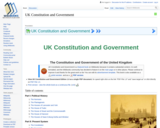
This book features a historical overview of and a look at the present political system in the United Kingdom.
- Subject:
- Political science
- Social and Behavioral Science
- Material Type:
- Textbook
- Provider:
- Wikibooks
- Date Added:
- 01/12/2021

This book features a historical overview of and a look at the present political system in the United Kingdom.
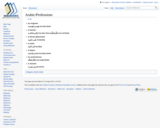
This brief list provides seven contemporary professions and careers in Arabic and translated English. The words are also accompanied by transliteration, and are written in masculine and feminine form.
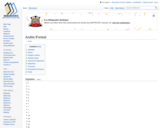
This page presents a very basic and brief description of some of the most fundamental aspects of Arabic grammar, including noun gender, word order, verb conjugation, and the most common pronouns. The page covers the parts of speech and provides examples in English and Arabic.
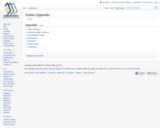
This appendix is a compilation of various lists of words and phrases, some of which are quite brief, and some of which, like the "useful words" list, are quite extensive. Some of the materials rely on transliteration alone and therefore require no knowledge of Arabic script while others are written in Arabic. The word lists are focused on common words such as professions, greetings, common expressions, and also include a fictional dialogue of two people greeting each other.
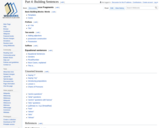
This page contains links to an assortment of 29 articles on a wide range of grammatical topics, although there is some overlap; for example there are two articles on the idafa structure. The articles are brief as opposed to in-depth and meant to give the reader a basic understanding or review of the issues discussed.
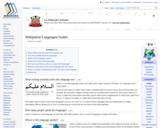
This site provides a description of Arabic aimed at a younger audience which includes the language's history, its famous authors, where it's spoken, common phrases and traditional expressions. The text emphasizes general information over language instruction.
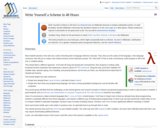
Most Haskell tutorials on the web use a style of teaching akin to language reference manuals. They show you the syntax of the language, a few language constructs, then tell you to create a few simple functions at the interactive prompt. The "hard stuff" of how to write a functioning, useful program is left to the end, or omitted entirely. This tutorial takes a different approach. You'll start off using and parsing the command-line, then progress to writing a fully-functional Scheme interpreter that implements a decent subset of R5RS Scheme. Along the way, you'll learn Haskell's I/O, mutable state, dynamic typing, error handling, and parsing features. By the time you finish, you should become fairly fluent in Haskell and Scheme.
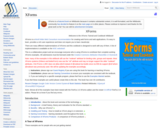
XForms is a World Wide Web Consortium recommendation for creating web forms and web applications. XForms is easy to learn, provides a rich user experience and does not require you to learn JavaScript. There are many different implementations of XForms and this cookbook is designed to work with any of them. A list of implementations is available on the W3C web site.
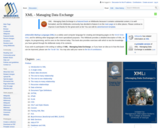
eXtensible Markup Language (XML) is a widely used computer language for creating and designing pages on the World Wide Web, and for defining other languages with more specialized purposes. This Wikibook provides a detailed description of XML, its origins, its programming, and its uses on the Internet today. This book also provides exercises with which to test the knowledge you have gained through the deliberate study of its contents.
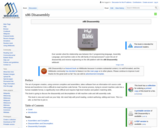
The act of program creation, using common compilers and assemblers, takes software from an information-rich source code format and transforms it into a difficult-to-read machine code format. The reverse process, trying to convert machine code into a human-readable format, is significantly more difficult and requires high-level intuition and pattern matching skills. This book is going to discuss the disassembly and decompilation of x86 machine code and x86 assembly code.